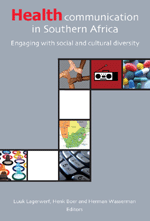Greece and Economic Recovery: Fake News in Action
 Ten years ago, the implosion of Lehman Brothers ignited a financial crisis whose impact and effects were felt virtually across the globe as banks and financial institutions everywhere that were exposed to subprime lending, formed part of a long chain of complicated and interconnected derivatives, and partook freely in Wall Street shenanigans.
Ten years ago, the implosion of Lehman Brothers ignited a financial crisis whose impact and effects were felt virtually across the globe as banks and financial institutions everywhere that were exposed to subprime lending, formed part of a long chain of complicated and interconnected derivatives, and partook freely in Wall Street shenanigans.
In Europe, the global financial crisis that started in the United States did not reach shore until late 2009, and the first victim was the land that gave birth to democracy and laid the foundations for the emergence of Western civilization.
Enter Greece and an ongoing debt drama, with catastrophically spectacular economic, social, and political ramifications, that has no end in sight.
Indeed, now into its eighth year, Greece remains entirely dependent on international bailouts (three bailouts involving the European Union and the International Monetary Fund have been arranged since 2010), has lost a quarter of its GDP with no realistic expectations of recovering it for decades to come, experiences unemploymentlevels which have oscillated between a high 27.8 percent (in July 2013) and a low 21.2 percent (in June 2017), and has seen the standard of living decline to 1960s levels.
Worse, Greece’s debt-to-GDP ratio has exploded since the start of the bailout programs, rising from 128 percent in 2010 to over 185 percent in 2017, and, with no debt relief in sight, the small Mediterranean nation has become truly a permanent debt colony inside the world’s richest region. In the meantime, a mass exodus of young and educated people has been in motion for several years now (youth unemployment rate in Greece stands currently at 43.3 percent), a process that is bound to have long-term effects on demographic trends and a significant impact on future economic developments.
Nonetheless, the story line advanced these days from Athens, courtesy of a pseudo-leftist government that has not only reneged on every one of its promises to the Greek citizens since coming to power, but has ended up reinforcing the neoliberal agenda of the European Union/International Monetary Fund duo with more perseverance than all previous governments put together, is that the country has “turned page” and that the crisis is now practically over. Read more
To Make Our Democracy Functional, We Must Confront Economic Inequality

Larry Bartels
The United States is a plutocratic disaster. Extreme levels of inequality and a political system in which elected officials cater primarily, if not exclusively, to the needs and interests of the rich have produced a social order beset with mounting problems and critical challenges that elections alone cannot realistically be expected to address. In this exclusive interview for Truthout, renowned political scientist Larry Bartels, author of the already classic work Unequal Democracy, provides a sweeping look at the state of our dysfunctional society.
C.J Polychroniou: In your book Unequal Democracy, you presented mountains of data revealing the seriousness of the problem of inequality in the United States. In your view, what have been the underlying factors for the emergence of a New Gilded Era, and why has the American political system failed to rise to the challenge of addressing the deep problem of inequality?
Larry Bartels: Most affluent democracies have experienced substantial increases in economic inequality over the past 30 or 40 years. In significant part, those increases are attributable to technological change, globalization and increased mobility of capital. … But different countries have responded to those changes in different ways. Most have mitigated their effects through increased redistribution, making post-tax-and-transfer incomes much less unequal. In the United States, there has been comparatively little redistribution. There have also been political shifts that have exacerbated pre-tax-and-transfer inequality, including deregulation of the financial industry, rules restricting the clout of labor unions and the erosion of the minimum wage.
Broadly, the difference is attributable to the economic ideology of America’s political leaders. More specifically, it is attributable to the economic ideology of Republican leaders. My historical analysis of partisan differences in income growth demonstrates that virtually all of the net increase in income inequality since the end of World War II has occurred under Republican presidents; income growth under Democratic presidents has tended to be faster and much more egalitarian.
What is the actual impact or effect of economic inequality on democracy?
We like to think that we can wall off our democratic political system from our capitalist economic system, leaving everyone free to get rich (or poor) but remain politically equal. In practice, however, that turns out to be impossible. Hence, “unequal democracy.”
My analysis of the voting behavior of US senators found that they are moderately responsive to the views of affluent constituents but completely ignore the views of low-income constituents. A study by Martin Gilens of policy outcomes likewise found that the probability that any given policy change will actually be adopted is pretty strongly related to the preferences of affluent people but virtually unaffected by the preferences of middle-class people, much less poor people.
Proposed explanations for these remarkable disparities in responsiveness often focus on distinctive features of the US — our permissive system of campaign finance, low rate of unionization, ethos of individualism and so on. But recent work along similar lines in other affluent democracies suggests that they, too, are marked by severe disparities in political influence rooted in economic inequality. Regardless of their specific political institutions, contexts and cultures, democratic systems seem to be chronically vulnerable to the conversion of economic power into political power. Read more
Health Communication In Southern Africa: Engaging With Social And Cultural Diversity
Part I: Individual And Social Network Factors
– 1. Condom Use In Tanzania And Zambia: A Study On The Predictive Power Of The Theory Of Planned Behaviour On Condom Use – Merel Groenenboom, Julia van Weert, & Bas van der Putte
– 2. Using Social Network Information To Design Effective Health Campaigns To Address HIV In Namibia – Rachel A. Smith
– 3. Social Capital And Communication On HIV Prevention With Young Adolescents In Kayamandi Township, South Africa – Henk Boer & Tessa A. Custers
Part II: Social Representations and Entertainment Education
– 4. The Portrayao Of HIV/AIDS In Lesotho Print Media: Fragmented Narratives And Untold Stories – Cecilia Strand
– 5. Social Representations Of HIV/AIDS In South Africa and Zambia: Lessons For Health Communication – John-Eudes Lengwe Kunda & Keyan G. Tomaselli
– 6. Edutainment Television Programmes: Tackling HIV/AIDS On The South African Broadcasting Corporation – Viola C. Milton
– 7. Edutainment Radio Programmes: The Importance Of Culturally Relevant Stories – Mia Malan
Part III: Patient Information
– 8. Using Pictograms In A Patient Information Leaflet To Communicate Antiretroviral Medicines Information To HIV/AIDS Patients In South Africa – Ros Dowse.
– 9. Understanding Motion In Static Pictures: How Do Low- Educated South Africans Evaluate Arrows In Health-Related Pictures? – Hanneke Hoogwegt, Alfons A. Maes & Carel H. van Wijk.
– 10. ‘Come, Let Me Show You’: The Use Of Props To Facilitate Communication Of Antiretroviral Dosage Instructions In Multilingual Pharmacy Interactions – Jennifer Watermeyer & Claire Penn.
– 11. Understanding South African Patient Information Leaflets: Readability And Cultural Competence – Daleen Krige & Johann C. De Wet.
Part IV: Supporting People: Practical Approaches To HIV/AIDS Communication
Individual and Social Network Factors
– 12. An Aids Awareness Programme In A Rural Area Of South Africa To Promote Participation In Voluntary Counselling And Testing – Hugo Tempelman & Adri Vermeer.
Patient Information
– 13. The Employment Of HIV Positive Young People For Health Promotion In Higher Education: A Case Studiy Of The Dramaide Health Promoters Project, South Africa – Emma Durden.
– 14. Cell Phones For Health In South Africa – Tanja E. Bosch. Read more
Health Communication In Southern Africa: Engaging With Social And Cultural Diversity ~ Introduction
 Introduction
Introduction
A focus on Southern Africa as an area where more and better HIV/AIDS communication is needed cannot be better underlined than by recent figures on adults living with HIV (15-49 years): In Sub-Saharan Africa the figure stands at 11%, whereas the global percentage is 3.25% (UNAIDS, 2008). The rise in these figures over recent years can partly be accounted for by the introduction of antiretroviral therapy, which means that statistically people living with HIV have a higher life expectancy.
Still, 67% of the global HIV prevalence in 2007 was accounted for by Sub-Saharan Africa, as was 72% of the global AIDS deaths (UNAIDS, 2008). The HIV/AIDS epidemic in Southern Africa affects women more than men (60% of people living with HIV were female in Southern Africa in 2007; UNAIDS, 2008), especially regarding HIV prevalence among youth. It is within this context that this book wants to consider the role that health communication may play in combating the HIV/AIDS epidemic.
Positive outcomes of health communication
How can health communication benefit the fight against HIV/AIDS? This positive influence may apply at different levels. Communication is an important part of prevention campaigns like in the case of the ABC (Abstinence, Be faithful, use Condoms) motto, which could contribute to a decline in HIV infections. Since the HIV/AIDS epidemic in Southern Africa typically affects women more adversely than men, gender relations form an important contextual dimension of health communication. Prevention messages have to be reinforced by the empowerment of women, enabling them to change their vulnerable position in sexual relations and negotiations.
Prevention and treatment go hand in hand and both aspects should be addressed in health communication. Voluntary Counselling and Testing (VCT) is a desirable outcome for several reasons. If people are infected they can get treatment and guidance. The spreading of infections may be controlled by more knowledgeable and responsible behaviour by HIV-infected people. Being more open about VCT might also change the perceptions of people living with HIV. Health communication can take the form of campaigns for better drug regimens and adequate state support. People living with HIV/AIDS (PLWA) need to take antiretroviral medicine to avoid AIDS, and their Antiretroviral Therapy (ART) compliance might be improved by good instruction and motivation. New media technologies have created opportunities to develop support networks for social movements and non-governmental organisations working to ensure better access to anti-retroviral medicines for PLWA.
The best-known example of such a network in Southern Africa is the one built around the group Treatment Action Campaign (Berger, 2006; Wasserman, 2005). The portrayal of PLWA may be changed in a more positive direction. Mass media and government policies need to be analyzed critically to detect and change negative or undesirable social representations of HIV/AIDS, or of individuals or groups associated with the disease. Health communication may serve to counter stereotyping, vilification or marginalisation of PLWA in sections of society who are seen as undeserving of state support, e.g. prisoners, migrants, asylum seekers, or sex workers (Berger, 2006). Read more
Health Communication In Southern Africa: Condom Use in Tanzania and Zambia: A Study on the Predictive Power of the Theory of Planned Behaviour on Condom Use Intention
 Abstract
Abstract
The aim of this study is to examine determinants of condom use intention of Tanzanian and Zambian high-school students. Additionally, we aim to investigate whether determinants differ among different target (sub)groups. Data were gathered in a sample of high school students from Arusha area, Tanzania (n = 286), and Kabwe area, Zambia (n = 272). The TPB determinants attitude towards condom use and subjective norm explain, respectively, 15.5% and 16.5% of the variance in condom use intention in Tanzania and Zambia, while self-efficacy is not significantly related to this intention in both countries. In most target (sub)groups from Tanzania and Zambia, the same TPB determinants predict condom use intention. Besides the TPB determinants, other variables are significantly related to condom use intention, such as sexual experience and gender. These results vary over the (sub)groups.
The findings of this study prove the utility and global applicability of the TPB on condom use intention in Tanzania and Zambia. Because most subgroups in both countries show the same TPB determinants of condom use intention, cost-effective overall HIV/AIDS prevention programmes can be developed that can easily be adapted for different subgroups in different countries.
Introduction
AIDS (Acquired Immuno-Deficiency Syndrome), caused by HIV (Human Immunodeficiency Virus), is one of the most threatening diseases worldwide (UNAIDS, 2007). Sub-Saharan Africa, the area of Africa south of the Sahara desert, is the most affected region in the world, with AIDS being the leading cause of death in this area. Because relatively little is done on HIV/AIDS prevention and treatment, it is expected that the number of infected people and deaths will rise (UNAIDS, 2007).
HIV infection is often a consequence of a specific behaviour, one of which is unsafe sex (Fishbein, 2000). While condom availability has risen in Sub-Saharan Africa, there are many factors that keep people from using them (AVERT, 2007). Therefore, most HIV/AIDS prevention programmes aim at increasing the use of condoms in order to decrease the risk of infection and restrict the AIDS-epidemic (Bennett & Bozionelos, 2000).
Theoretically, scientific knowledge can contribute to the effectiveness of HIV/AIDS prevention programmes. While some studies found that behaviour change interventions that were explicitly based on theory were not more effective than prevention programmes without a theoretical basis (see Hardeman et al., 2002, for a review), other research showed a higher effectiveness of prevention programmes based on scientific literature (Fishbein, 2000; Gredig, Nideroest & Parpan-Blaser, 2006; Jemmott et al., 2007; Munoz-Silva, Sanchez-Garciá, Nunes & Martins, 2007). A commonly used behavioural model in scientific studies is Ajzen’s Theory of Planned Behaviour (TPB) (Ajzen, 1991). According to the TPB, behaviour is best predicted by asking people whether they have the intention to show this specific behaviour. In turn, behavioural intention is determined by attitude, subjective norm, and self-efficacy. The current study on condom use intention in Tanzania and Zambia used the TPB as a theoretical foundation. Until now, a couple of studies on condom use intention applying the TPB have been conducted in Sub-Saharan Africa. Most of these were carried out in South Africa (Boer & Mashamba, 2007; Bryan, Kagee & Broaddus, 2006; Giles, Liddell & Bydawell, 2005; Jemmott et al., 2007). No studies using the TPB were conducted in Zambia yet, and only one study is available on Tanzania (Lugoe & Rise, 1999). The current study was carried out in Zambia and Tanzania to examine whether the results of studies conducted in South Africa are also valid for other countries in Sub-Saharan Africa. The aim of the study is to examine determinants of condom use intention of Tanzanian and Zambian high-school students. Furthermore, the following subgroups will be compared to identify TPB determinants of intended condom use among specific target groups: males and females, students with and without a steady boy/girlfriend, and students with and without sexual experience. Subgroup analyzes to investigate whether the relation of attitude towards condom use, subjective norm, and selfefficacy to intention varies among specific target groups have hardly been reported in African studies. The research questions are:
* What are the differences between Tanzanian and Zambian high-school students in condom use intention, attitude towards condom use, subjective norm, and self-efficacy?
* What are the determinants of condom use intention of Tanzanian and Zambian high-school students?
* What are the determinants of condom use intention of males and females, students with and without a steady boy/girlfriend, and students with and without sexual experience? Read more
Health Communication In Southern Africa: Using Social Network Information to Design Effective Health Campaigns to Address HIV in Namibia
 Abstract
Abstract
When programmers only use representative responses from target audiences, they may design an intervention that does not fit a community’s channel of communication. This study illustrates how to use social network analysis and community haracteristics to identify if communitywide health campaigns or mass media programmes best serve communities for communication interventions addressing HIV in Namibia. Interviews were conducted with Namibians from different households (N = 3763) in ten different communities over a year (October, 2003 to June, 2004). Based on community characteristics and social network analysis, group-based interventions rerecommended for seven of the ten communities, with varying suggestions for inclusion of critical groups and/or leaders within each area, and radio programmes to reach isolated groups. Additional suggestions for health interventions in each community are proposed from their community’s characteristics.
Introduction
When health campaign designers only use the average scores from a random sample of their target audience, they may design an intervention that does not fit the community’s channels of communication. When misfits occur, diffusion of information, norms, or behaviours may not occur or may generate unintended community activities, such as ostracism and stigmatisation. Information about the community’s social system – its groups and their interconnections – could allow designers to adjust their interventions to these social influences. Community-level variables differ significantly from individual-level variables. They focus on group and social processes of leadership, equity, and social norms instead of individuallevel behaviours, attitudes, and perceptions. This chapter shows community networks created through people’s participation in social groups, and presents a decision-making model for interventions based on the community’s network and characteristics.
These data come from Namibia. Namibia sits on the northwestern border of South Africa, and South Africa ruled it from 1946 until 1988. Although differences between the countries exist (e.g., population size: 2 million in Namibia versus 44 million in South Africa), their similar HIV prevalence rates for adults (19.6% for Namibia, 18.8% for South Africa, UNAIDS, 2006) make this exploration in Namibia a useful opportunity to further health communication development in Namibia and South Africa. The next section details more about networks and health campaigns followed by details about HIV in Namibia.
Social networks and health communication
Imagine that Sarah, who lives in a rural community in Africa, attends a church meeting where she listens to a dramatic production about HIV transmission, treatment, and care for those living with HIV (e.g., DramAidE, Mbuyazi, 2004). As she talks with other audience members after the show, they may share information about HIV, reinforce or change existing social norms about HIV, and disclose their intentions to help (or not) those living with HIV. After leaving the drama, Sarah may also talk to those who did not attend the drama about its content as well as how other audience members reacted to it.
Through this process, information and social norms diffuse within the community. A map of communication patterns – a social network – of this community ahead of time, might have revealed this church and Sarah as having powerful, central positions within the network. Their central positions could provide them with great potential to diffuse HIV information, norms, and innovations in this community. One way to think about networks is as a system of water pipes. The pipes are channels for communication – the communication is the water flowing through them. As more pipes exist within a community, communication may flow more quickly and easily through the community. People tapping into the water system at strategic places, such as where many pipes come together, may have better opportunities to access communication flowing in the system, stop communication from flowing further, or to put their own messages into the system.
Social networks, then, can be thought of as people tied to each other through one or more specific types of interdependency (e.g., familial, emotional, or economic). A social network is a map of the relationships between actors (e.g., people, groups, leaders, objects, or events); social network analysis investigates these relationships (Wasserman & Faust, 1994). Read more


